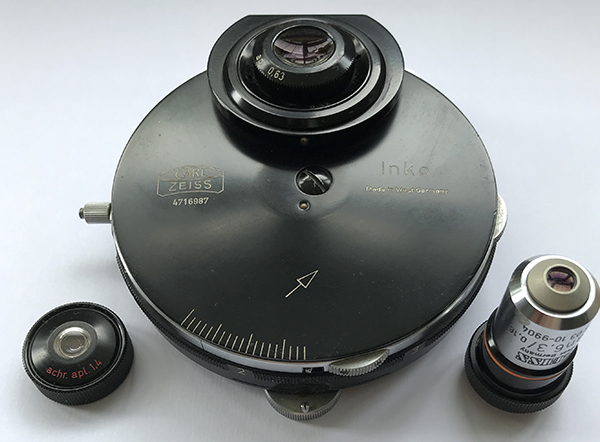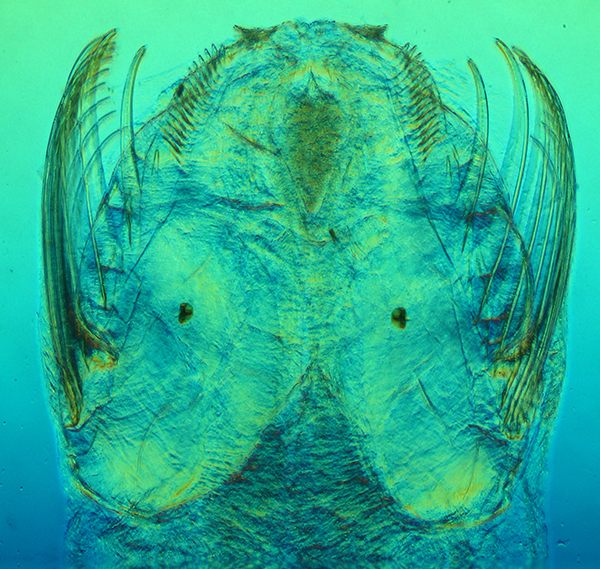The DIC systems for the Zeiss 160 mm tube length optics were somewhat complex with a range of condensers with DIC prisms and two options for the upper prism. A valuable guide through this potential minefield if building a DIC system is Spike Walker's excellent survey on his The-Ultraphot-Shop website. The system I added to my Zeiss Photomicroscope III some years ago is the 'Inko' condenser with I, II and III fixed DIC prisms used with the type II adjustable DIC prism above the objective. It is the model 46 52 79 although not stated on my example. Some systems used an individual prism for each objective in a slotted turret.
The Zeiss 6.3X planachro' is one of my favourite objectives for low mag work below 10X. From Spike's survey I do not have the optimal condenser to match it for DIC which was prism I of the condenser with I, II, III and IIII with the NA 1.4 condenser top lens replaced with the NA 0.63 lens. However, with a DIC system from any maker it is worth the 'try it and see' approach as some combinations could often work even though not recommended by the maker.
I had the LWD condenser with the NA0.63 top so swapped this top for the NA1.4 on the DIC condenser. The I prism was used—although likely(?), it is uncertain if this has the same specs as the I prism in other condensers. To my eye the DIC effect is strong enough to be of use. Spike notes that a further complication of some of the DIC systems is that to attain an even background required objectives with specified serial numbers. My 6.3X does not have a serial no., only a part number but it is clearly not the optimal as there is a strong gradient in the background field (grey or colours if adding a quarter wave retarder). This gradient occurs for some of my other objectives as well such as the 16/0.4 Neofluar and the 16/0.35 planachro' with the I prism.
However, I have never regarded the tonal gradient a major disadvantage, in fact the contrary—if orientated with respect to the subject it can give a pleasing background arguably of more appeal than an even tone, especially if a retarder on the field lens base polariser is used to give a colour gradient rather than grey. See the example below.

The Inko condenser with I, II and III fixed prisms with the NA 1.4 top lens replaced with the NA 0.63. In this system the prisms were intended for planachromatics,
I - 16X, II - 40X, III - 100X. A benefit of this model is that the brightfield position was retained and with Ph 2 and Ph 3. Oddly the four prism model had no brightfield option.

Head of Sagitta arrowworm. Slide prepared by my brother-in-law John Atkinson.
Zeiss 6.3X, prism I, quarter wave retarder with aligned colour gradient. Three image stack using Alan Hadley's freeware CombineZP.
The halo around bottom borders are a stacking artifact which with my limited skills with the software have been unable to minimise.
Despite the low mag, stacking is desired as the eyes are in quite a different plane to other features.
Comments to the author David Walker are welcomed.